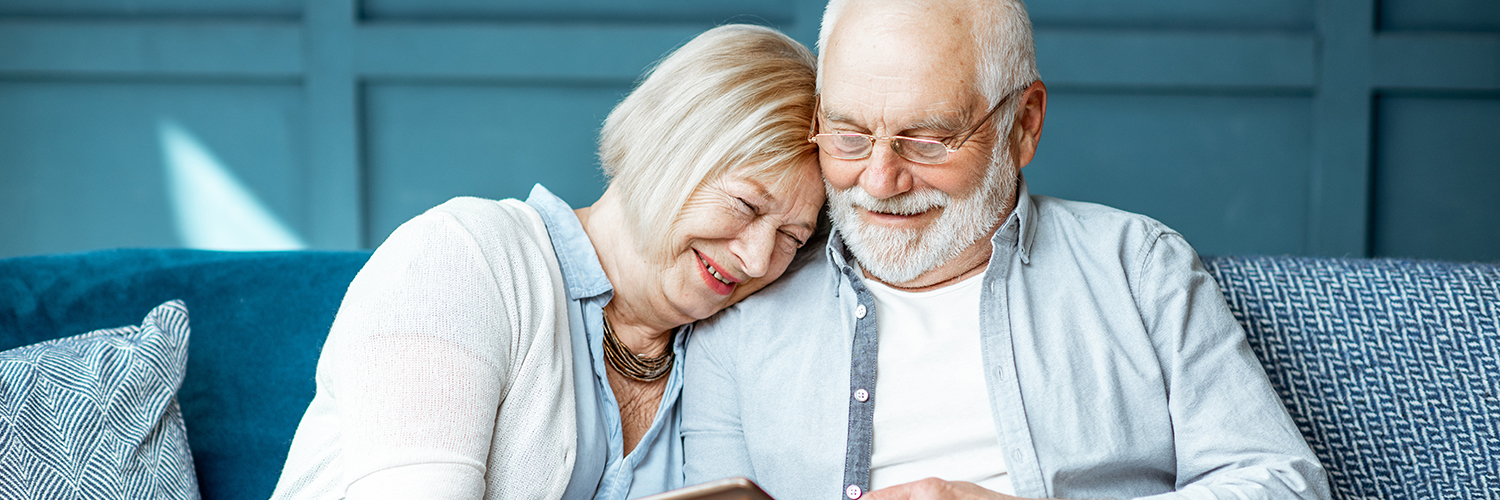HEART RHYTHYM PROBLEMS
Using a heart monitor can help find or rule out a heart rhythm problem. It also will guide treatment, if needed.
There are a variety of heart rhythm monitors to record how your heart is beating and to pick up on any irregular heart rhythms or patterns while you are at home, work or play. You can wear some devices. In rarer cases, others can be inserted under your skin near the heart.
Use this resource to learn more about heart rhythm monitors, what types there are, when to use them, and what to expect after the test.
Common Arrhythmias
Your heart rhythm is controlled by electrical signals. An arrhythmia happens if there is a misstep in the heart’s usual rhythm. Some examples include:
• Atrial fibrillation – a rapid heartbeat that is also very erratic; it can cause the blood to pool and clot in the heart, increasing the risk of stroke
• Tachycardia – heart rhythms that are too fast; for example supraventricular tachycardia or ventricular tachycardia
• Bradycardia – heart rhythms that are too slow
A normal resting heart rate is usually between 60-100 beats per minute and can vary throughout the day and with activity.
Some common reasons are if you have:
- Heart palpitations. For example, if you notice your heart is flip-flopping or beating unevenly or very quickly. Many heart palpitations aren’t serious and are more of a nuisance (for example with premature ventricular contractions, or PVCs, which are “extra” heartbeats). Still, it’s important to know what is happening with your heart, and whether you need any follow-up visits.
- Other symptoms – for example dizziness or feeling faint – that suggest you might have atrial fibrillation or another heart rhythm disorder.
- Unexplained fainting spells, stroke, or mini strokes.
- A family history of or existing heart disease. Heart rhythm problems are common among people with heart disease, but many people may not have clear symptoms and may even have a normal ECG. Finding a heart rhythm problem early can help prevent other complications.
- Had a recent heart-related event or treatment to be able to monitor your heart activity for any irregular or dangerous rhythms after:
- Starting or stopping a heart medicine
- An ablation
- A heart attack
- Finding out you have hypertrophic cardiomyopathy or other heart problems linked to heart rhythm disorders
Benefits of Using a Heart Monitor
Heart monitors can help:
- Record your heart’s activity as you go about your usual day. A heart monitor can cover a much longer period of time than is possible with an ECG in your doctor’s office. (Those tend to provide only 10-15 seconds of activity).
- Pick up on irregular heart rhythms that don’t happen very often and that a standard ECG can miss. Many offbeat heart rhythms can come and go quickly. If you have symptoms while you are wearing a monitor, it can help give you and your care team answers.Think of it as going fishing and casting a wider net to catch abnormal heart rhythms that aren’t predictable in terms of when they occur or that last for very short periods of time.
- Detect irregular heartbeats that you may not be aware of if you don’t have symptoms.
- Give peace of mind that your care team will see any changes to your heart’s electrical activity and figure out if your symptoms are, in fact, related to your heart.
Over time, heart monitors have become much smaller and less cumbersome. Today, many can be sent back in the mail for added convenience.
There are many different types of heart rhythm monitors. Each one is battery-operated and equipped with special sensors that can detect and record the ups and downs of the heart’s rhythm.
Heart monitors usually vary based on:
-
- How long they are worn and record the heart’s activity. Some are worn for just a few days, while others will monitor heart activity for a few weeks or even longer.
- How the information is captured. For example, if the wearer needs to take some sort of action to start a recording when symptoms occur or if the device continually collects data on its own. With some devices, if you press a button or do something to trigger a recording, it will save information from about 45 seconds before and a little while after the event. This helps to see whether there is a relationship between symptoms and how your heart is beating.
- Whether the data is:
- Sent in real-time for review and to notify your care team if a worrisome arrhythmia is found.
- Analyzed later once the device is sent back or returned after wearing it.
This is sometimes called “record now, analyze now” or “record now, analyze later.” Ask your care team which approach is best for you.
Devices that might be prescribed
| Device | How or where it’s worn | How long it’s usually worn or used | Things to keep in mind/ask about |
|---|---|---|---|
| Holter monitor | Around your neck with a strap so that it rests near the middle of your chest or on your belt | 1-3 days (up to 2 weeks for newer models) |
|
| External event or patch recorders
Similar to a Holter monitor, but for longer. |
Event monitors have sensors that attach to your chest using sticky adhesive; wires connect these sensors to a handheld monitor that you can put in your pocket or on your belt. Some types attach to your wrist.
Patch recorders are placed on the skin of your chest with sticky adhesive; they are usually small enough to be hidden under clothing and not have visible wires or leads; these wires are usually built into the device. |
2-6 weeks, depending on the device selected |
|
| Mobile Cardiac Outpatient Telemetry (MCOT) | How it’s worn depends on the model; some come as a patch that can be applied firmly to chest | Usually up to 30 days |
|
| Implantable loop recorder | Inserted just under the skin near the heart through a small incision | Up to 4 years |
|
No matter what device is used, it’s helpful to write down any symptoms you have and when so your care team can see if they match up to any abnormal heartbeats or rhythms that are found. Not everyone has or notices symptoms, but some common ones include:
- Palpitations (your heart feels like it is flip-flopping, skipping beats, or racing)
- Shortness of breath
- Feeling lightheaded or dizzy
- Unexplained fainting spells
- Chest pain, discomfort or pressure
- Being overly tired
For devices that are placed on your chest, the area of the skin will be cleaned and prepped to be sure the sensors attach well and have good contact to record your heart activity. For men, chest hair in that area may need to be shaved off.
There are a number of factors that come into play when selecting which heart monitor is best for you, if one is needed. The choice mostly comes down to how often you have symptoms if you do.
For example, if you feel your heart start to race, flip flop or skip beats nearly every day, wearing a Holter monitor for 2-3 days is the way to go.
If, however, your symptoms only happen every once in a while (let’s say weekly or monthly), wearing a Holter monitor for just a few days could miss a heart rhythm issue, if there is one. In this case, wearing an event monitor or a patch recorder for a longer period of time is the better choice.
Longer monitoring may also be the best option for people who don’t have symptoms, but an arrhythmia is suspected.
Other things to think about and talk with your care team about:
- Whether you need real-time monitoring where the data is collected and sent to a central place where someone looks at it and sends a report to your care team. Other devices record your heart’s activity, but the information is reviewed after you send the monitor back. If you have a loop monitor inserted, it will monitor your heart around-the-clock without you needing to do anything.
- How involved you’d like to be in the process. Some devices record the heart’s activity on an ongoing basis without you doing anything. Others rely on you pressing a button or doing something to start a recording.
- If you use your smartphone or smartwatch to track any heart measures and how this information should be used. These should be seen as add-on tools, and not a replacement for standard, medical testing. Care needs to be taken in interpreting the information you get. It’s also important not to become overly concerned or obsessed with checking, which can cause added anxiety for some.
- Any downsides if you decide not to monitor right now.
Remember that a heart monitor can detect and help diagnose an arrhythmia, but it doesn’t treat or correct a heart rhythm problem.
Always talk with your care team about what to expect and what the results might mean.
After you’ve worn the device for the chosen period of time, you’ll need to return it. Heart monitors that are prescribed can often be sent back in the mail using the packaging and instructions provided by your care team or returned to your doctor’s office.
It may take a couple of weeks for the information to be downloaded, compiled and reviewed by a heart doctor. For heart rhythm monitors that provide real-time data analysis, you would have heard from your care team before the end of the monitoring period if any worrisome heart activity was detected.
It’s always helpful to review what, if any, symptoms you had while using the monitor. This will help your care team compare the heart rhythm pattern seen from the recording and whether they are linked.
If you had symptoms while wearing the monitor, your care team will have all the information they need to confirm whether they are related to your heart. If there were no changes to your heart’s activity, then it’s likely due to something else and other tests may be ordered. If there were changes, then you will discuss what type of arrhythmia was found and if treatment is needed.
Always ask about any necessary follow-up.
You may have questions about heart rhythm monitoring, why it is being recommended, and what the information tells you. It may be helpful to write down a list of questions ahead of time. Below are some common questions many patients have:
- Why are you recommending this type of heart monitor over others?
- How will wearing it affect my regular activities at work, caring for my family, being active, or bathing?
- How will the monitor measure my heart rate and rhythm?
- Do I need to press a button or do anything when I have symptoms or does the device automatically record what’s happening with my heart?
- How do I know if the monitor is working?
- Would longer monitoring give us more useful information about my condition?
- How accurate is this type of monitoring? Are there any limitations?
- What are the downsides if we don’t do any monitoring?
- Should I also keep a log of when I feel symptoms and what I was doing at the time? What symptoms are you most interested in knowing about?
- Do I need to avoid magnets or other things that can disrupt the signal between the sensors and the device?
- I’ve heard some monitors that stick to the chest can irritate the skin. What can I do about it?
- What do my results mean?
- Are my palpitations serious or should I try to ignore them? Will I need ongoing monitoring?
- Will my insurance cover monitoring?
- Should I consider using or getting a device that can record an ECG (a smartwatch or other device) more regularly?
- Is there value in using my smartphone or watch to monitor my heart rhythm or heart rate?
VISUAL AIDS
How do Betablockers work
Dr Ubaid works well with all the staff. His approach to his fellow workers is both patient and respectful. His easy going manner makes him very approachable to ask advice and he accommodates any delays graciously. I personally look forward to working with him.
What I valued as much as his erudition was his people skills, he related to everyone as an individual, his understanding, communications, interactions and personable nature were exceptional. Dr Ubaid was quite simply staggering, he is somebody that has had a significant impact on me, not just for giving me my life back and for his medical genius but for being the person that he is.
Your kindness and good humour were very much appreciated and certainly put me at ease throughout the procedure, which on other ocassions has been quite daunting, your relaxed approach to my problem was very calm and professional.
His presence radiates a warmth, he instils confidence in all those around him, he sets an example for others to follow and is a role model for others to aspire to be like. He was kind, courteous, professional, understanding, caring and highly approachable and relatable as well as the medical guru we all benefit from and rely on to give us our lives back.
In life we all need role models, if I was in training to be a doctor you would certainly fit that role for me. I thank you so much for what you have done to allow me to continue with my fitness regime and wish you well in the life ahead of you.
A great team player, all of the nursing staff are very happy to work with Salahaddin as he is polite, efficient, and has a great aura of calmness and competence and appreciates the time to be light-hearted.
In Dr Salahaddin Ubaid I had a medical genius who also contributed significantly to aiding me overcome all of the negative worries and emotions I was feeling. The care he provided to me, his attention to detail, his personal knowledge, expertise, experience and skills was outstanding.






